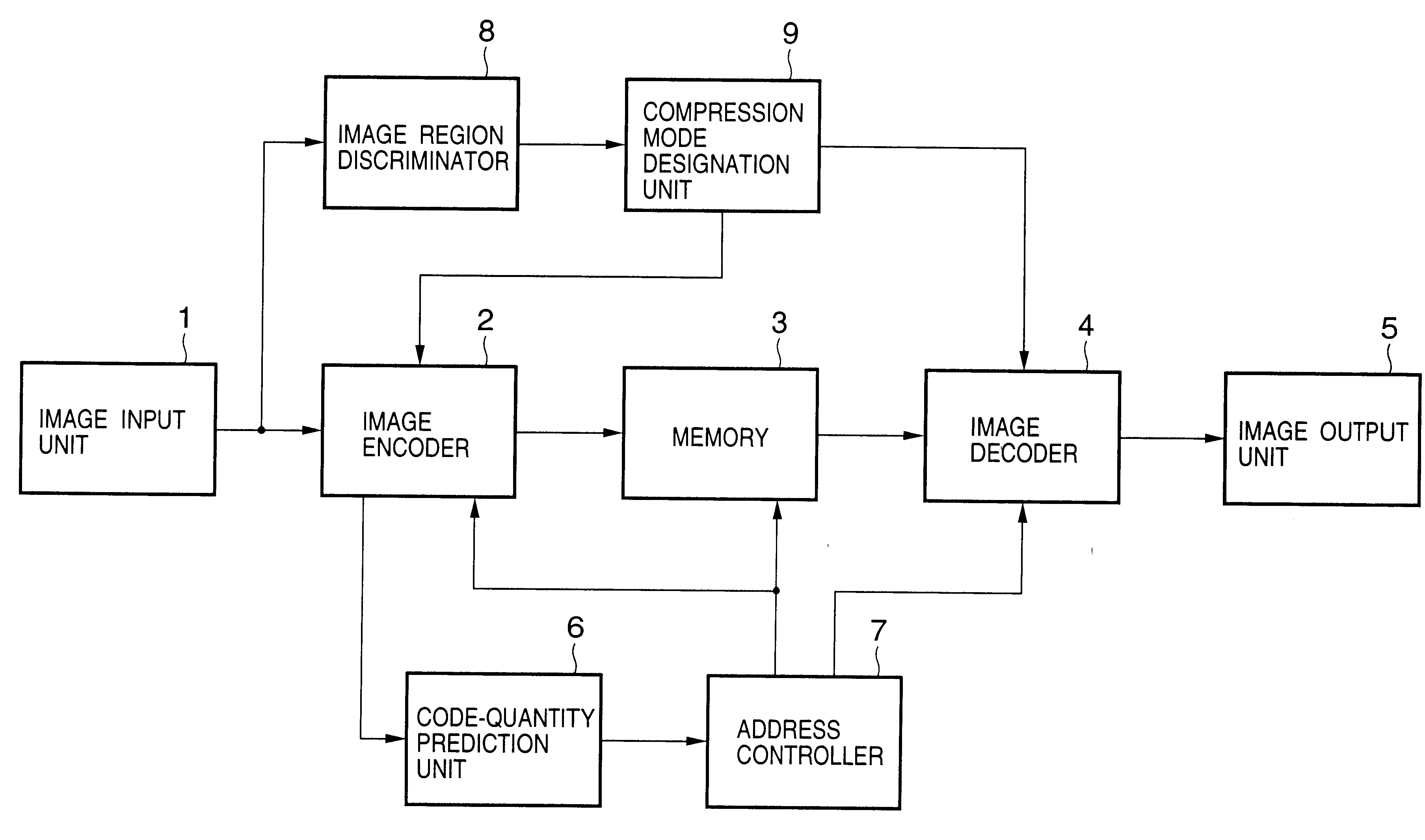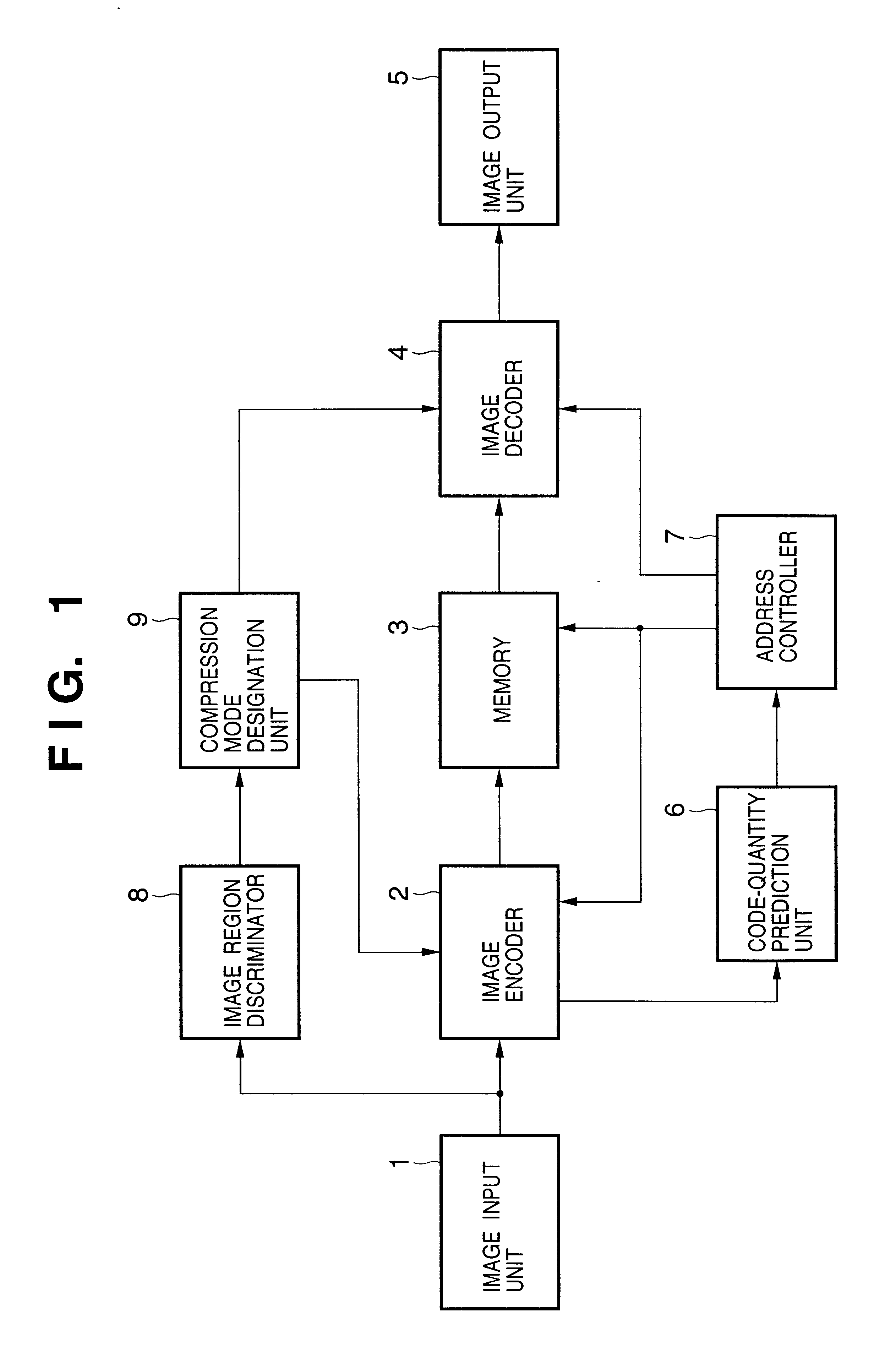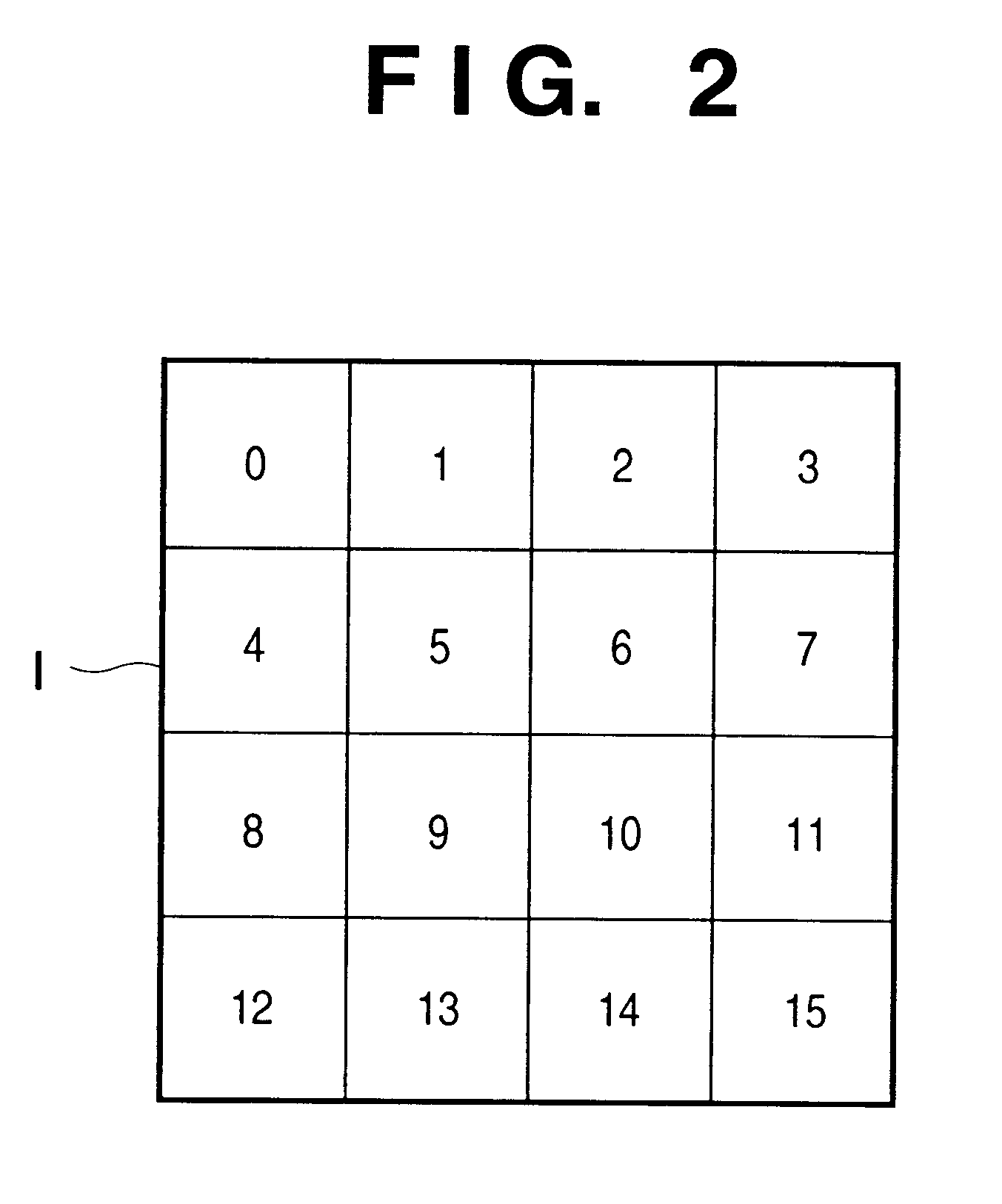Image processing method, apparatus and storage medium
a technology of image processing and storage media, which is applied in the field of image processing apparatus, method and storage media, can solve the problems of prolonging processing time, increasing the cost of the apparatus by providing a large memory capacity, and unable to decide the amount of memory capacity needed for memory b>3/b>,
- Summary
- Abstract
- Description
- Claims
- Application Information
AI Technical Summary
Benefits of technology
Problems solved by technology
Method used
Image
Examples
first embodiment
[First Embodiment]
FIG. 1 is a block diagram illustrating the basic structure of an image processing apparatus according to a first embodiment of the present invention. It should be noted that a device such as a copier, printer or digital camera is a concrete example of an image processing apparatus according to the present invention.
Image data that has entered from the image input unit 1 is compressed and encoded by the image encoder 2 and the code stream produced by this encoding is stored temporarily in the memory 3. The code stream that has been stored in the memory 3 is output to the image decoder 4, which restores the code stream to a digital signal representing the original image and outputs the digital signal to predetermined media via the image output unit 5. The image input unit 1 is an image reader such as a scanner if the image processing apparatus is a copier or an image sensing device such as a CCD if the image processing apparatus is a digital camera. If the image proc...
second embodiment
The second embodiment will be described with regard to a method of writing code streams to a memory of a fixed capacity adaptively in accordance with the type of image. The components of the image processing apparatus of the second embodiment as well as the functions of these components are basically the same as those of the first embodiment. Accordingly, only the aspects of the second embodiment that differ from those of the first embodiment will be described.
In the second embodiment, it is assumed that a binary image contained in an image undergoes reversible encoding and that it is necessary to assure the reversibility of a decoded image with respect to the tiles that correspond to the binary image. The image entered from the image input unit 1 undergoes image-type discrimination in the image region discriminator 8 and the compression rate of the relevant tiles is designated by the compression mode designation unit 9. In the second embodiment, the result of this processing is out...
third embodiment
[Third Embodiment]
In the first and second embodiments described above, the type of image is discriminated tile by tile. However, there is a possibility that a tile will contain a mixture of natural image and a composite or binary image. In this case, if whether or not overwrite is to be performed is decided tile by tile, as in the second embodiment, there is a possibility that the image quality of a part of a tile that must be reversible will decline. In the third embodiment, therefore, there will be described a method in which a decline in image quality is not brought about even when a tile contains a mixture of images of different types.
Within a tile to be encoded, a region of interest (ROI) that is to be decoded at an image quality higher than that of its surroundings is decided by the image region discriminator 8, and mask information indicating which coefficients belong to the designated region is generated by the image region discriminator 8 when the tile of interest is subjec...
PUM
 Login to View More
Login to View More Abstract
Description
Claims
Application Information
 Login to View More
Login to View More - R&D
- Intellectual Property
- Life Sciences
- Materials
- Tech Scout
- Unparalleled Data Quality
- Higher Quality Content
- 60% Fewer Hallucinations
Browse by: Latest US Patents, China's latest patents, Technical Efficacy Thesaurus, Application Domain, Technology Topic, Popular Technical Reports.
© 2025 PatSnap. All rights reserved.Legal|Privacy policy|Modern Slavery Act Transparency Statement|Sitemap|About US| Contact US: help@patsnap.com



